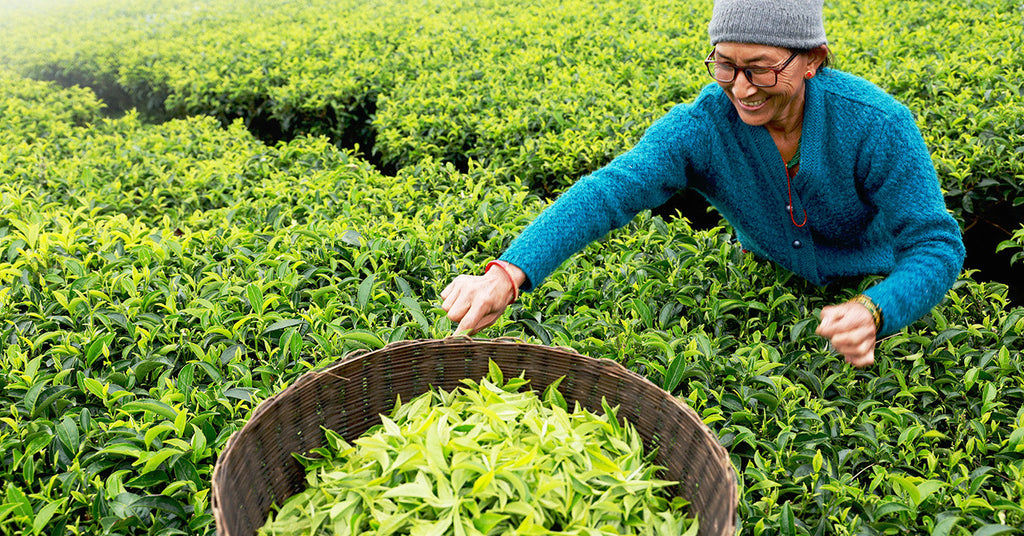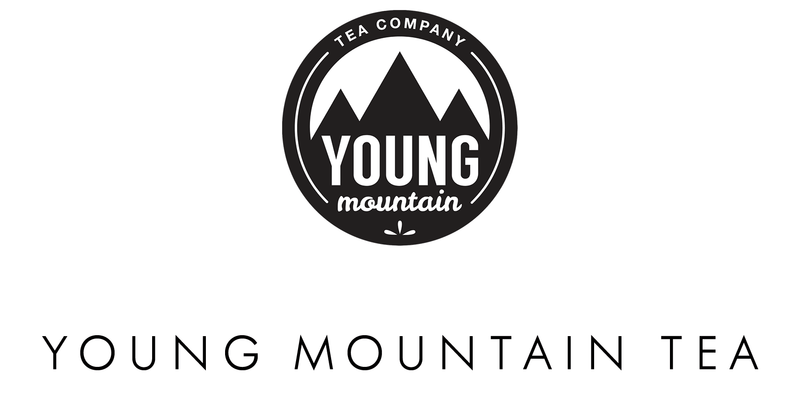How We Met Nepali Tea Farmers

“Take it!” cries the smiling elderly man over the music, thrusting an open bottle of rakshi into my chest. I laugh as I accept the vessel of homemade millet and barley wine, most likely from his very kitchen. Dancing around a bonfire with the board members of Tinjure, Nepal’s first tea cooperative who we met only earlier today, is adventure beyond words. I’m here to learn about the nascent Nepali tea movement, and two nights into the journey, here I am dancing with the pioneers leading it.
Nepali Tea: Bordering Darjeeling Tea Yet Worlds Apart
For the last two years, I’ve been looking for community-based models of tea production to inform our work with small tea farmers in Kumaon, India. Scouring the distant corners of internet chat forums and LinkedIn groups, I learned that something new and locally led was happening in the far eastern portion of Nepal. The details were vague, usually conflicting, and always offered with supreme confidence. In short, the perfect ingredients for a good story.
The plot line went something like this: In the mid-1800s, the Emperor of China gave a gift of tea seeds to the Prime Minister of Nepal, Jung Bahadur Rana. Rana was looking for ways to create industry, so he designated several of the mountain nation’s eastern-most districts that shared a border with the world-famous Darjeeling region as prime places to plant Camellia sinensis. The nearly identical growing conditions of eastern Nepal and Darjeeling meant the new industry would benefit from ideal terroir.
The bushes grew strong and for the first few decades, the harvested leaves were sent to Darjeeling for processing. Then in the 1970s, the Nepali government helped setup factories to process its leaf. With support from international development NGOs, European governments, and a small amount from private investors, Nepal was building an industry to support its farmers. And since most of Darjeeling’s labor hailed from Nepal and traveled fluidly across the porous border, secrets and saplings had been flowing for some time.
Being landlocked made it difficult to establish supply chains, especially since the ports all had to run through India. The Kolkata-based tea titans were on the rise, and they resisted the newcomers to the tea scene. Further, in-fighting among the Nepali communities and variability in the tea’s quality scared away larger buyers looking for easy, reliable, and consistent volume. As a result, most people who drink Nepali tea today never know it; most of it is sold as knock-off Darjeeling tea, compensating for the undersupply of Darjeeling tea that miraculously always seemed to meet demand.
However, it appeared that some growers were now working to carve out a new, independent Nepali tea identity. Free from the baggage of expectations, unbridled experimentation was rumored to be underway.
I brought my notes to my friend Passang, who lives in Darjeeling’s Makaibari Tea Estate. Squatting next to him on the side of the hilly road that runs through the estate, I told him I wanted to meet Nepali tea farmers. He told me to return in a month with some passport-sized pictures for the border crossing. When I pressed for details, he gave him his mischievous grin and said, “Don’t worry, I’ll handle it.”
A Chance Encounter With Nepal Tea Pioneers
I approach traveling in new parts of the Himalayas like swimming in a river. Find a good friend with local knowledge of the waters, enter the flow, and then trust the currents of conversations with strangers to guide me in the right direction. That’s exactly what happened here: Passang met us at the airport with his friend serving as the driver, and off we went, first through the roadside Indian immigration station, then across a long, narrow bridge packed with street rickshaws openly smuggling goods between the two nations, and then twisting up through bamboo groves into the Himalayan foothills.
Well after sunset, we had rolled into the mountain town of Ilam and got rooms at the first hotel with a light on. Six short hours later, I woke up to Passang excitedly knocking on my door. I shuffled out to join him outdoors, and he showed me we had the dumb luck of chosing accommodations directly across from a stall with a freshly-painted sign announcing Tinjure: Nepal’s First Tea Cooperative.
The simple stall was run by a young, sharply dressed man who was drying off cupping sets that had been used the night before. We spoke to him briefly, and by 10 a.m. we were cupping a full range of beautiful organic teas—from elegantly shaped greens to immaculate whole-leaf blacks—and learned they were made by a group of farmers four hours away.
When I said we wanted to visit, the shop owner told us we should bring an overnight bag of clothes and food and leave immediately. We scrapped our plans to visit the gardens Passang had researched and raced up and down the cobblestone streets of the town to get supplies. We passed hanging bunches of bananas and hardened cheese made from yak milk, then got back on the road again.
For three hours, our SUV traced the spine of the Himalayan foothills that framed the valleys where the communities lived. Bamboo grew alongside ginger in terraces, and we crawled through crowded bazaars where pop-up vendors sold jars of dalle khursani, red chilis that pack an incredible punch. Interestingly, liquor stores dotted these bazaars as well, a reminder that in Nepal, alcohol is sold openly (a striking difference from its neighbor, India).
The road dead-ended in a cluster of houses, and in the very last house, we had tea with an elderly woman whose leathered cheeks framed a set of the most piercing eyes I have ever looked into. From there, our trip continued by foot, walking down the ridge on a washed-out muddy road that switched through occasional strips of stores before depositing us on a small, grassy plateau with a gorgeous view of the Himalayas.
We were greeted by a handful of well-dressed elderly men wearing smart woolen coats and brightly patterned hats (called dhaka topi) in bold greens, pinks, and oranges. The clear leader of the group, a man named Padam Tamang, came towards us. His palms were pressed together in namaste, his wooden cane tucked into the crook of his elbow. Padam was the Chairman of the Board of Directors for Tinjure, and he had quickly assembled the rest of the Board once he heard foreign visitors were interested in their teas.
We were welcomed us into the corrugated tin room that was their office and removed our shoes, a customary polite gesture. We sat shoulder-to-shoulder around a table lit by a naked bulb hanging from the ceiling and received cups of tea served in clear, glass cups. The rich aromas twisted in the cold afternoon air. As we drank the exquisite elixirs, Padam and the other men spoke in Nepali to Passang, who then translated to English. Slowly, we learned the story of Tinjure.

A Community-Based Approach to Nepal Tea Production
I learned that three villages on three neighboring hills had banded together. They named themselves Tinjure in homage to their geography. Tin means “three” and jure means “hills” in the local language. Initially, the farmers grew tea and sold their harvest to factories for processing. This type of model—where farmers own their harvest and sell it to factories for processing—is called the "bought-leaf model," which was common in the Nilgiris of south India. Interestingly, one of the factories Tinjure initially sold to was run by the Banskota family whose Nepali teas we’d later sell alongside Tinjure’s.
What was unique in this case was that Tinjure was among the first cooperative to establish its own factory, which is a tea farmer’s best means for financial independence. It’s at the factories where the money stands to be made. As the senior board member explained to us, the Nepali tea farmers asked themselves, “If other local people are processing tea, why can’t we?” So they pooled their money, and, with the support of a European grant, they opened the doors of their factory in 2013.
We then headed to the factory for a tour. It was situated on a steep terrace below the office. As I gingerly tip-toed down the slope, watching my footing carefully, I was humbled by one of the board members, cane in hand, who skipped down the rocky hillside past me, his classy suit coat and colorful hat leading the way. The factory was a spotless, simple wooden structure. Nothing too fancy, albeit very clean and orderly.
After a tour of the building, we climbed another terrace onto a half-acre tea plot. A strong, slender woman named Shiva Kumari Shresta, another of Tinjure’s board members, proudly opened the gate to her tea garden. It struck me how rare it was to have a woman in a senior leadership position, and yet how natural she seemed in it.
The stretch of tea plants waiting for us was absolutely exploding with vigor. The fresh, green upturned face of each leaf was illuminated by the sunlight washing over the terrace, and the plants’ thick frames dug into the earth. It was therapeutic just being here, the plants had such a lush vitality to them. We learned that Shiva and her husband Raj, another of the Board members, have been farming tea since 1995. Before that, they grew rice.
To this day, this remains one of the healthiest tea gardens I’ve seen, a result of their sophisticated system of vermicomposting (organic compost created by worms).
We also learned that Shiva and Raj have one son and three daughters. All the daughters are married and have moved to cities. Their son, however, is working in the tea factory as the head tea maker—a living example of how a thriving tea industry in these mountain towns can lead to fulfilling lives for the next generation.

And then, finally, the cupping of the tea. We climbed back to the office, where two well-worn wooden tables were placed side-by-side, a fresh sheet of white paper stretched across them. The classic, white porcelain cupping sets and spoons were ready for action, and so were we.
The teas were absolutely divine.
On the spot, we committed to buying our first 100 pounds of Nepali Golden Black and Nepali Green Pearl. From there, one of our strongest tea maker relationships was born.
I’d return to this hillside office many times over the next six years. By myself, with other Young Mountain Tea members, with groups of guests on our guided trips, and even with buyers from major American tea importers.
Everyone who comes to Tinjure feels the magic. The rugged journey, the warmth and hospitality of the farmers, the picturesque rolling tea gardens, and the stunning cupping experience with an unparalleled view. While there, it’s hard not to feel that anything can be possible.
Interested in Other Tea Sourcing Stories?
Taste our teas from Tinjure:
Blog Author:

Raj Vable, Founder
He has been confounded by the leaf since his first transcendental encounter with white tea in 2010. Three years later, he started Young Mountain Tea to bridge his budding tea obsession with his interest in traveling in the mountains and previous experience creating job opportunities in rural India. He revels in working across cultures and can be regularly found trying to get the rest of the team on board with another outlandish tea project. His favorite teas remain white, and he’s always searching for the next cup of magic.









Leave a comment